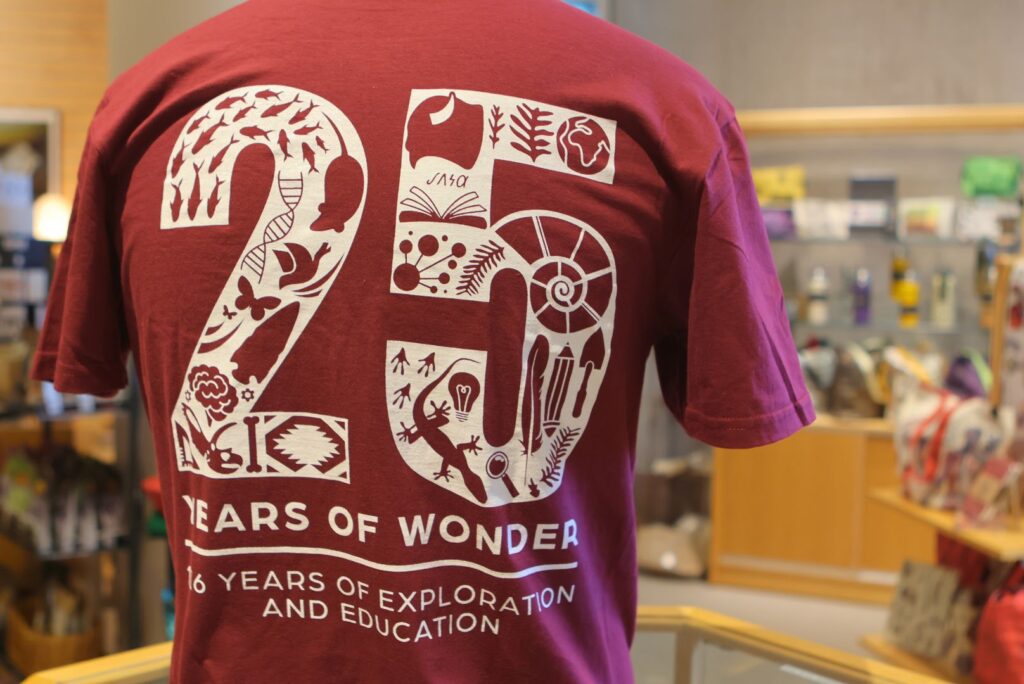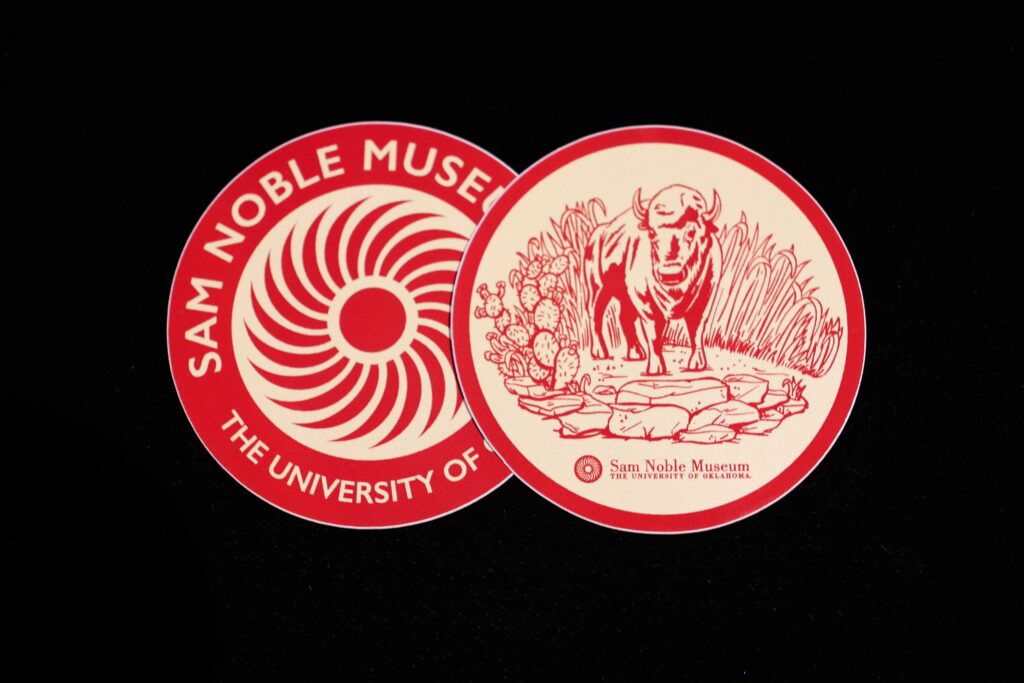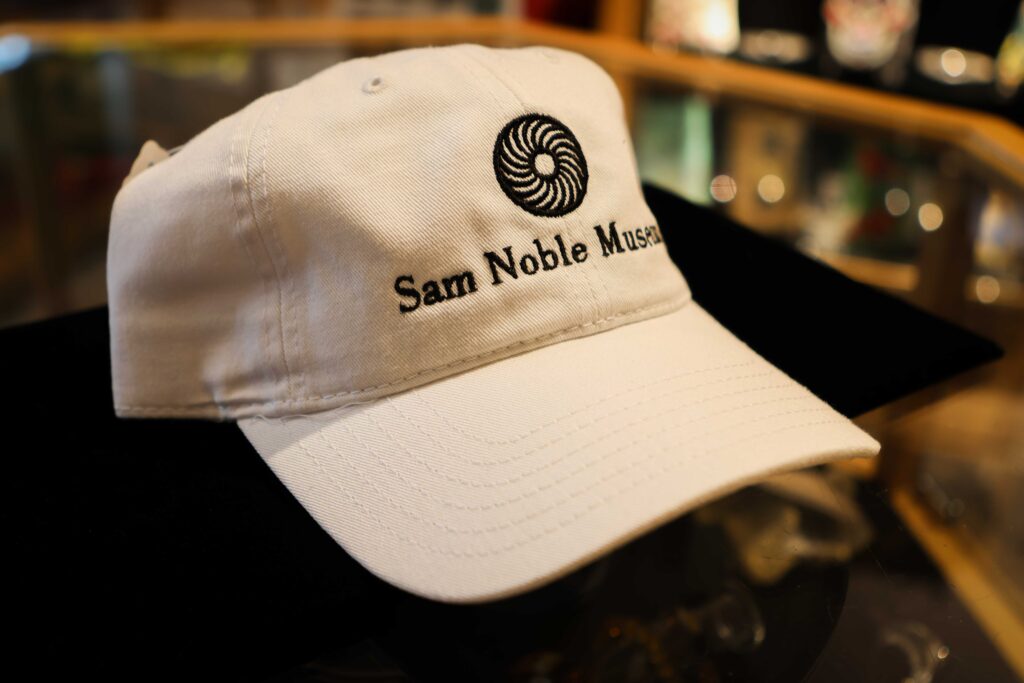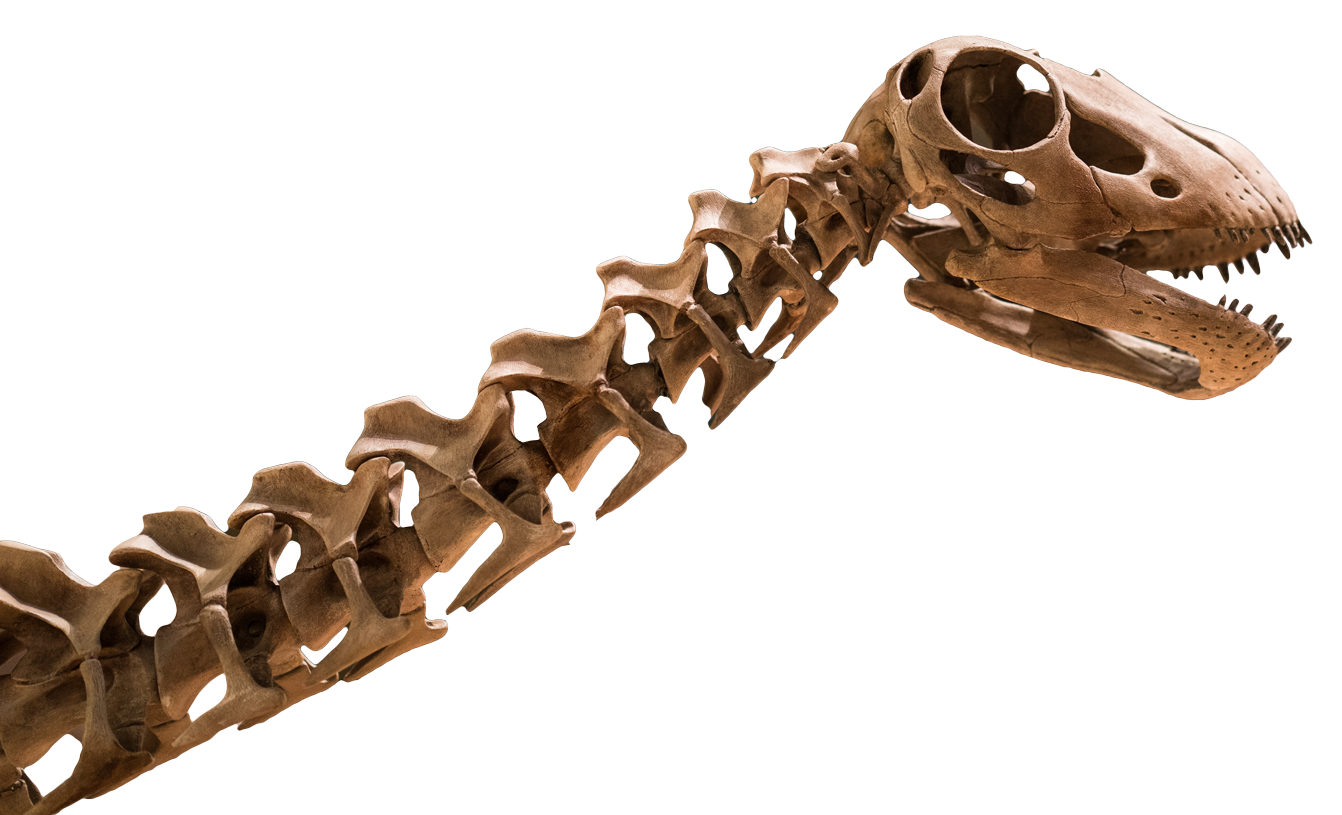
Join the Celebration, All Year Long!
This year, the Sam Noble Oklahoma Museum of Natural History invites you to join a celebration 25 years in the making! We’re marking the 25th anniversary of our building’s grand opening—a milestone shaped by generations of educators, learners, and explorers like you. All year long, we’ll be celebrating with unforgettable experiences for the whole family. Whether you’re revisiting favorite exhibits or uncovering something new, there’s never been a better time to explore the natural and cultural history of our world firsthand.
Events
Celebrate our 25th anniversary all year long with Curiousidays, our signature monthly family event series! Each Curiousiday brings hands-on activities, themed programming, and a chance to explore the museum in a new way. As a special anniversary perk, the first 25 visitors at every Curiousiday receive complimentary admission.
Here are the upcoming highlights:
- October 11 — Spooktacular: Our annual spooky celebration with costumes, contests, and creepy-crawly science fun
- November 8 — Celebrate Oklahoma!: Experience Oklahoma’s rich natural and cultural heritage—and enjoy free admission for all visitors in as a thank you for all the support from the citizens of Norman and the state of Oklahoma!
- December 13 — Winter Wonderland: Step into the science of snowflakes, frosty habitats, and the magic of the season
- January 10 — Paleo to Pop: Explore how natural history collides with pop culture in films, games, comics, and more
- February 14 — Spring Fling: Discover the surprising ways love and attraction bloom in the natural world
- March 14 — Full STEAM Ahead: Dive into science, technology, engineering, art, and math through interactive fun
- April 11 — Cycle of Life: Celebrate spring’s cycles of growth, change, and renewal in nature
- May 9 — Collections Celebration: Get a rare look at treasures from the museum’s archives and collections
Mark your calendar and learn more about our upcoming Curiousidays here!
Giveaways
Each Curiousiday also features a special anniversary giveaway:
- September 13 — Migration at the Museum: Dino bank
- October 11 — Spooktacular: 25th anniversary t-shirt
- November 8 — Celebrate Oklahoma!: Family membership
- December 13 — Winter Wonderland: Coffee mug and museum sticker
- January 10 — Paleo to Pop: $20 discount on program registration
- February 14 — Spring Fling: Family membership
- March 14 — Full STEAM Ahead: $25 Excavations gift card
- April 11 — Cycle of Life: 25th anniversary t-shirt
Don’t miss out on the chance to take home these exclusive items. Remember, the first 25 visitors at every Curiousiday receive free admission!
Milestones & Memories
Over the past 25 years, the Sam Noble Museum has celebrated countless milestones—from meaningful exhibits and beloved programs to community events that bring people together. This anniversary is not just about looking back at where we’ve been, but also about looking ahead to the next 25 years of exploration and discovery.
We invite you to share your favorite museum memories, join us at upcoming events, and be part of shaping our future. Together, let’s honor the past, celebrate the present, and imagine the discoveries yet to come. Check out our upcoming events to help us make history!
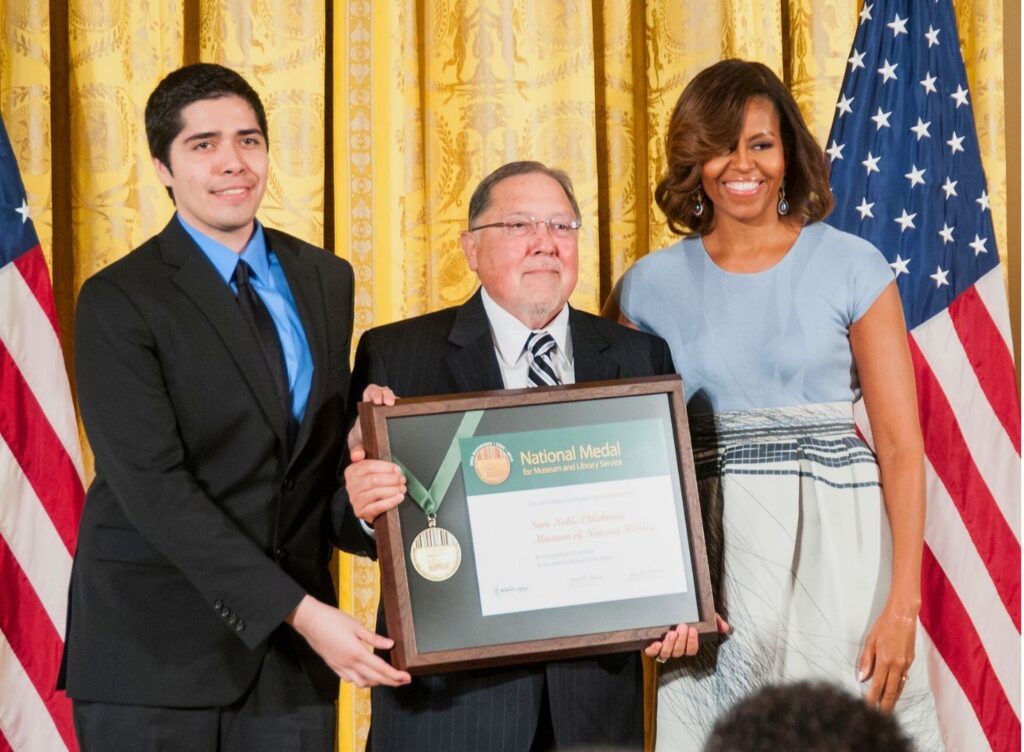
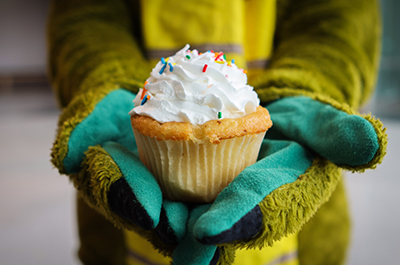
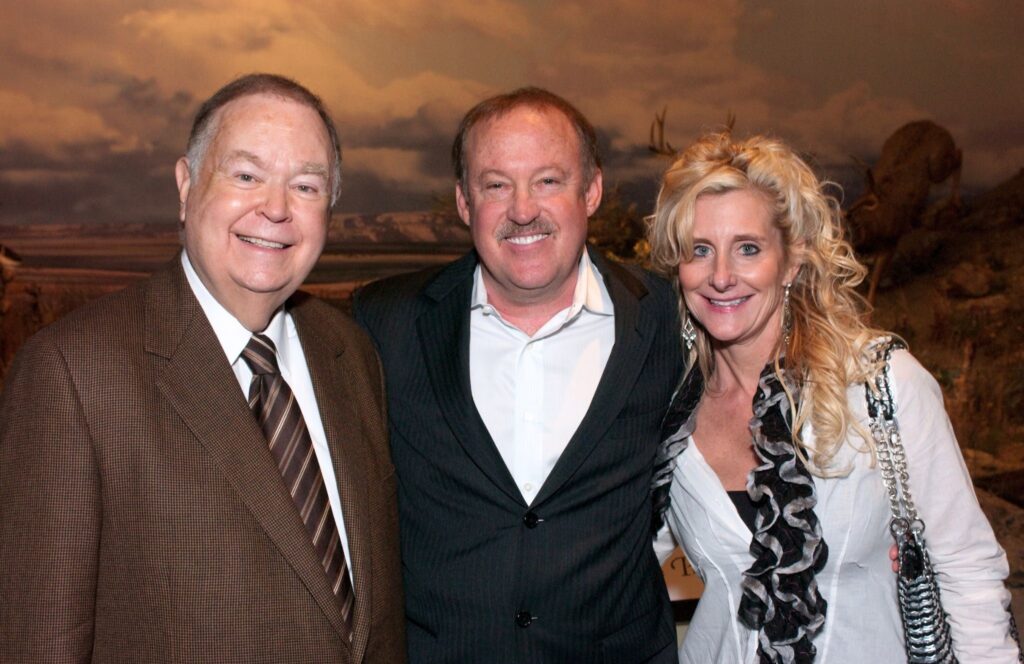
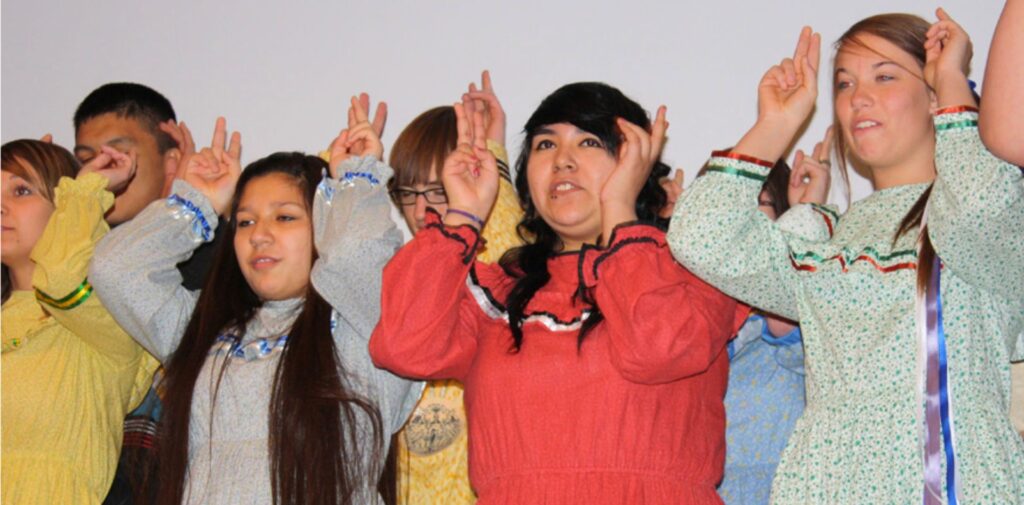
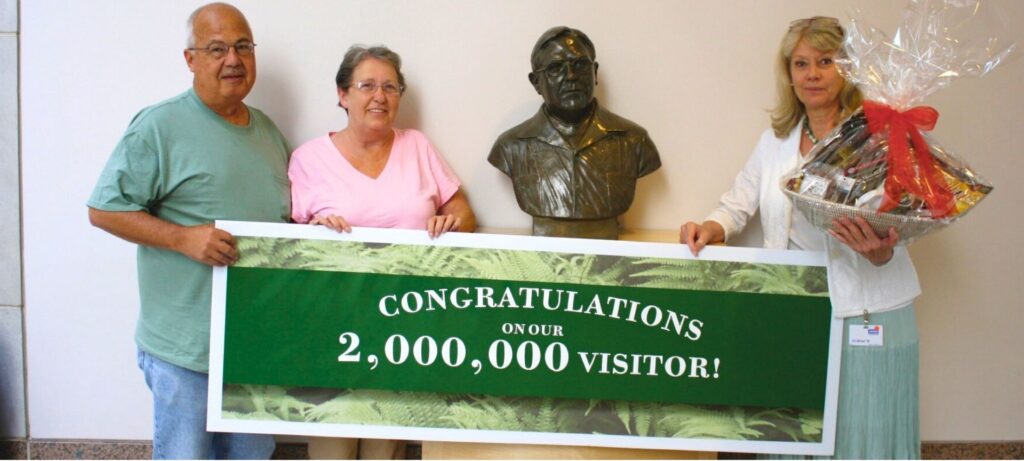
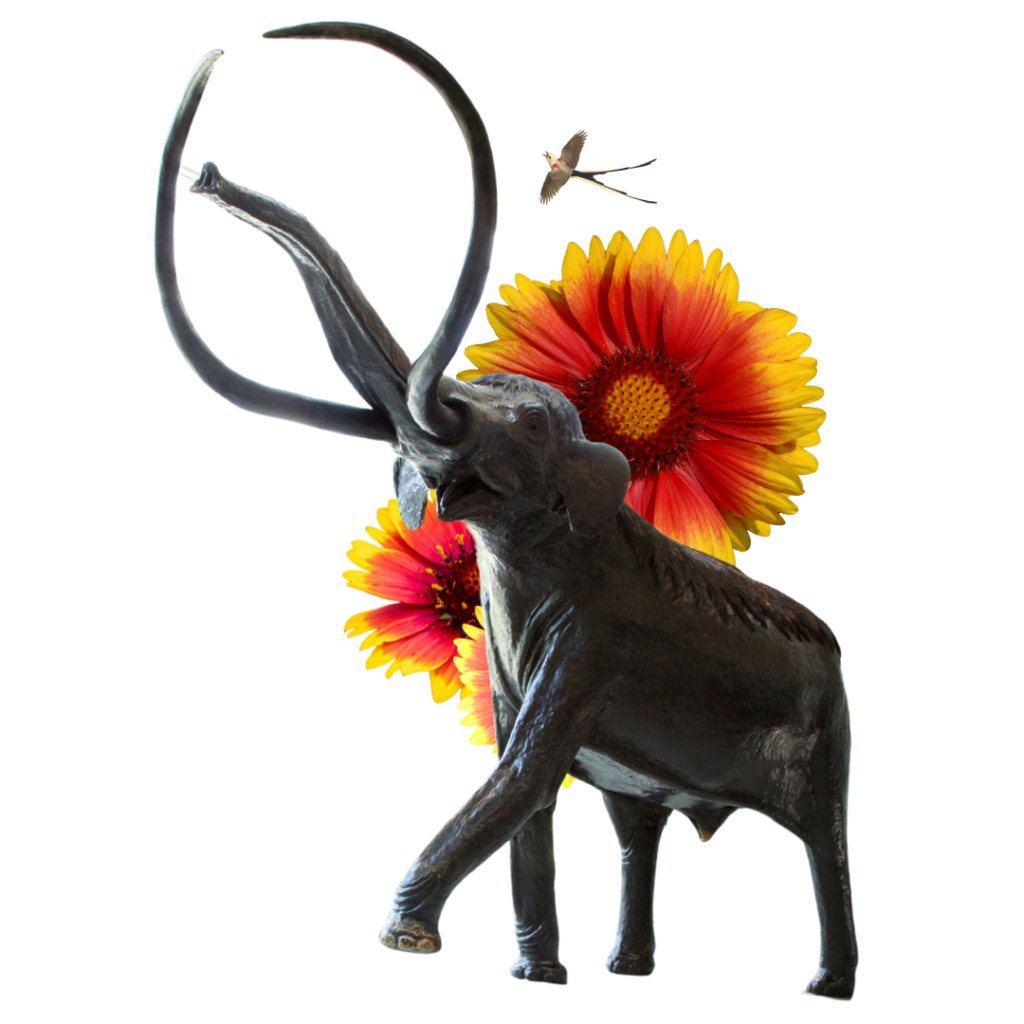
A Mammoth Tale from Michael Mares
When we began designing the south rotunda the architect told me that the museum did not need a rotunda (there was none in the “final” drawings or even the model that we built). “I need a rotunda, whether or not the building needs one,” I said. “I need it to sell the building. This design is not doing it for me.” “What are you going to put in this rotunda?” he asked. “I’m going to put the largest bronze mammoth in the world and a native family in bronze watching the mammoth,” I responded. Problem was, not only did I not have a rotunda, I did not have a mammoth, much less the world’s largest bronze mammoth and a native family. Where does one get the largest cast bronze mammoth the world has ever seen?
Over the next couple of years the building started to come to life. Floors, concrete/steel supports, more floors, walls, 330,000 bricks and cut stone from the same quarry as the United States Holocaust Memorial Museum in DC. Over the next few years the building slowly took form.
Flash forward to the building being completed. The rotunda was clean and pristine, the highly polished floors were ready. Then I got a call from the bronze foundry that the mammoth was being shipped. Since the building now had walls, windows and doors, one could not just roll the mammoth into the rotunda. How to get it in there? It was too large for any of the doors we had, yet it had to be installed in the glass rotunda at the most southerly point in the museum.
And then it arrived. To paraphrase astronaut Jim Lovell:
“OU, we have a problem…”
Read More
The building’s largest doors open off the loading dock, but they are not really that large. Moreover, they open into hallways, which are large enough to move furniture and most exhibits, but a mammoth? As the tractor trailers moved into the loading dock area several things became immediately clear. 1) The bronze mammoth was articulated, which meant it had its legs, head, ears and whole body. The tusks were separate. The mammoth without the tusks weighed 6,000 pounds!
We had a mammoth problem.
The mammoth sat on the truck awaiting a strategy. A giant bronze mammoth attracts visitors and soon newspeople were buzzing around like flies. I was told that word was getting back to New York City and the Today Show was thinking of doing a story about the museum’s mammoth problem and might send someone tomorrow.
I could just imagine all sort of dumb Okie jokes, museum people who ordered a mammoth that turned out to be too large to get into their new museum.
Not on my watch. I called my staff and the construction workers together and told them we had to get that mammoth into that building by nightfall. Again paraphrasing NASA on Apollo 13, Failure was not an option.
First problem, even if we got the mammoth into the hallway, it was too large to make the turns required to get to the front galleries. If we got it into the back hallway, the only way into the galleries was through the elevator. With its rolling undercarriage it weighed more than the elevator could hold. Se we decided to get railroad ties and build a structure under the elevator in the elevator shaft that could withstand the mammoth’s weight. Then we lowered the giant freight elevator onto the railroad ties. We had to do one other thing to make this happen. We had to cut the legs off of the mammoth! An acetylene torch was brought out, the crane lifted the mammoth into the air, and the legs were cut off at the body.
We now had a legless, tuskless mammoth that weighed perhaps 5,000 pounds. Now we could begin.
We were able to locate three carry deck cranes that could work in tight places.
We had to lay thick plywood sheeting from the back hallway and across the Brown Gallery and most of the Great Hall so as not to damage the beautiful terrazzo floor that had just been laid.
Then the ballet began, with lots of human power, heavy machinery, and the will to make it happen, to not admit that we could not do this thing that had never been done before, at least as far as we were aware.
A crane lifted the mammoth to the loading dock level and it was placed on the wheeled undercarriage. Then we began to push it and pull it through the elevator, and the elevator floor held! The mammoth did not pitch into the elevator shaft. Then it was on through exhibit storage, the Brown Gallery and, finally, into the Great Hall. The terrazzo seemed fine and the three small cranes were also helping pull the mammoth and keep it off the floor.
In the middle of the Great Hall, we had room to position the three cranes to lift the mammoth off the carrier. The three cranes began a type of ballet with each one attached to the now floating mammoth trying desperately to keep it in the air and not let it crash to the floor. Inch by inch we worked the beast toward the South Rotunda. It was amazing to see the three cranes coordinating their work. It was slow but steady work. Periodically everyone would stop and gather to discuss how to proceed, the mammoth floating in the Great Hall before them.
Ever so slowly we reached the South Rotunda. Then things got interesting. How does one lift the mammoth into place? Thus far it was positioned on its side. Again, there were discussions. Eventually the three cranes put themselves into a position where they could rotate the mammoth into more or less a standing position. Now we could solder the legs back onto the beast. So we did. Eventually the mammoth got its legs back, with many scars from the torch. The tusks were also soldered onto the animal. Now it again weighed more than 6,000 pounds and was ready to stand for eternity in the South Rotunda’s center.
But wait! Before you remove all the cranes, let’s be sure it can stand on its own without toppling. So a giant leather collar was rigged for the mammoth and placed around its neck. One of the taller cranes held it by the collar as it was lowered to the floor.
The mammoth has its right forefoot raised. Kids love sliding under it and having their picture taken. As we released two of the cranes, the mammoth stood for a few seconds then toppled toward the raised front foot! The crane held it by the collar around its neck. Good thing no one was under the foot!
Now what? Another discussion with contractors and museum people. We decided the mammoth would never stand unless it were anchored to a very strong support. But how? Where? There was only one place it could be attached we decided after examining construction documents, blueprints, and so on.
So we brought in the jackhammers and broke up our beautiful terrazzo floors, then broke up the concrete slab under the floor all the way to the thick rebar of the supporting base slab of the building. The mammoth was raised to swing once again for the last time in the air over the floor. A support structure was designed to go through the foot and into the body of the animal and the steel structure was anchored to the steel rebar. Finally the animal could be lowered to the floor, attached to the very thick steel of the concrete pad, and stand solid and forever in the South Rotunda.
We re-stained the bronze of the legs and polished the whole animal. There were still issues. The tusks were unacceptable so I had to send a paleontological curator to Nebraska to oversee the casting of new tusks based on an actual mammoth from our collection. In less than a year the new tusks arrived, the old ones were removed, and the mammoth was now complete and accurate.
A few months later, the Native American family and their dog were installed to stand with fear near the giant beast, a scene that could have taken place in Norman, Oklahoma 10,000 years ago. The South Rotunda was now complete.
I reached the Today Show to tell them we had gotten the Oklahoma mammoth into the museum. They said in that case they were no longer interested in the story. Go figure.
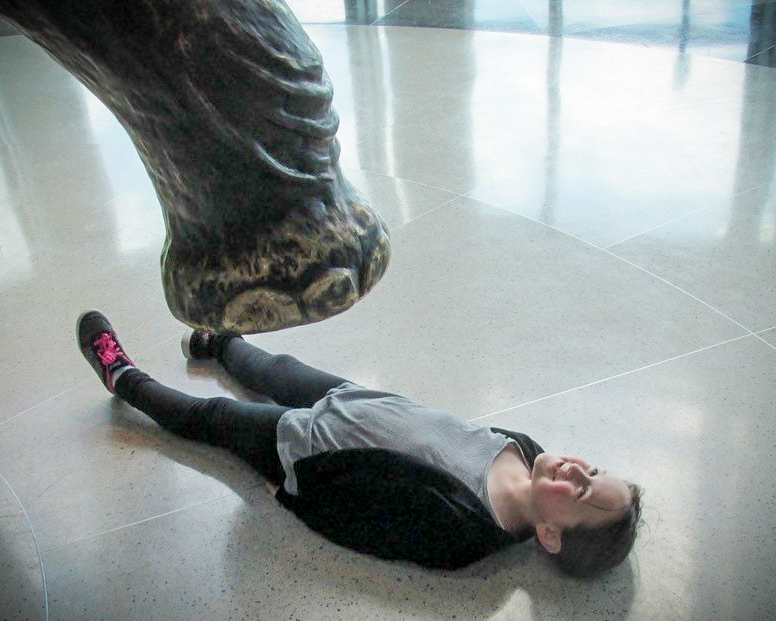
Ever since that remarkable and long day, children can slide safely under its raised front foot.
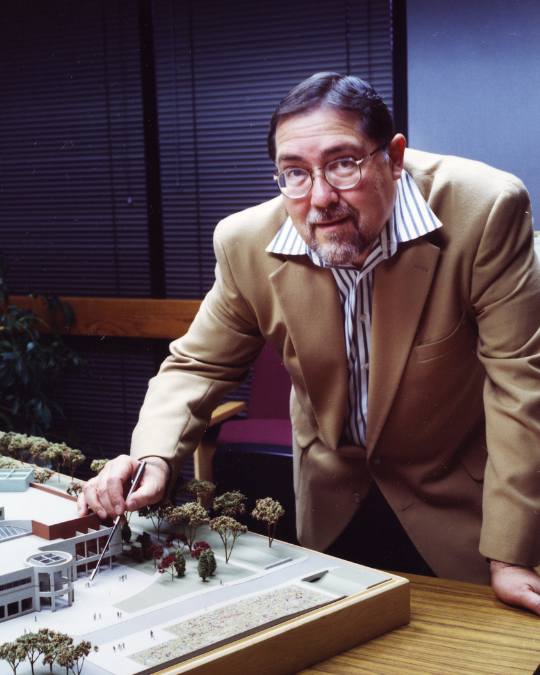

Want to take a souvenir home?
Check out our limited edition 25th Anniversary merchandise!
